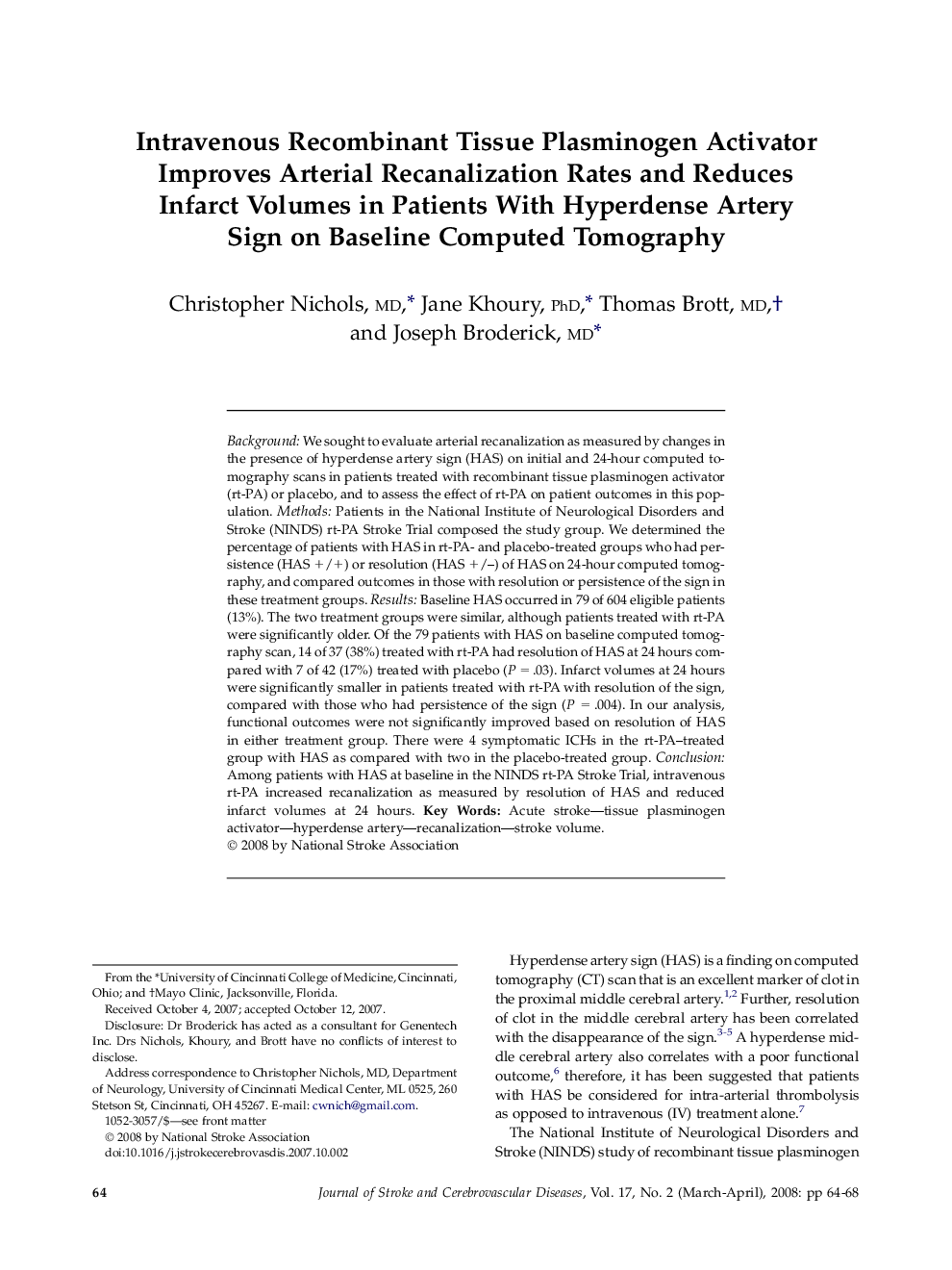| Article ID | Journal | Published Year | Pages | File Type |
|---|---|---|---|---|
| 2707874 | Journal of Stroke and Cerebrovascular Diseases | 2008 | 5 Pages |
BackgroundWe sought to evaluate arterial recanalization as measured by changes in the presence of hyperdense artery sign (HAS) on initial and 24-hour computed tomography scans in patients treated with recombinant tissue plasminogen activator (rt-PA) or placebo, and to assess the effect of rt-PA on patient outcomes in this population.MethodsPatients in the National Institute of Neurological Disorders and Stroke (NINDS) rt-PA Stroke Trial composed the study group. We determined the percentage of patients with HAS in rt-PA- and placebo-treated groups who had persistence (HAS +/+) or resolution (HAS +/–) of HAS on 24-hour computed tomography, and compared outcomes in those with resolution or persistence of the sign in these treatment groups.ResultsBaseline HAS occurred in 79 of 604 eligible patients (13%). The two treatment groups were similar, although patients treated with rt-PA were significantly older. Of the 79 patients with HAS on baseline computed tomography scan, 14 of 37 (38%) treated with rt-PA had resolution of HAS at 24 hours compared with 7 of 42 (17%) treated with placebo (P = .03). Infarct volumes at 24 hours were significantly smaller in patients treated with rt-PA with resolution of the sign, compared with those who had persistence of the sign (P = .004). In our analysis, functional outcomes were not significantly improved based on resolution of HAS in either treatment group. There were 4 symptomatic ICHs in the rt-PA–treated group with HAS as compared with two in the placebo-treated group.ConclusionAmong patients with HAS at baseline in the NINDS rt-PA Stroke Trial, intravenous rt-PA increased recanalization as measured by resolution of HAS and reduced infarct volumes at 24 hours.
